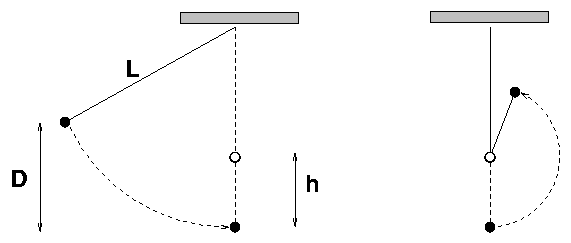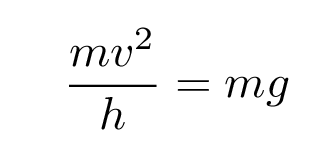
 Copyright © Michael Richmond.
This work is licensed under a Creative Commons License.
Copyright © Michael Richmond.
This work is licensed under a Creative Commons License.
Consider the following experiment

A ball of mass m is attached to a string of length
L,
and is pulled so that the ball is an initial height
As the ball swings over the top of the peg, it is pulled downwards
by both the string and by gravity.
This downwards pull provides the force needed to
keep the ball moving in a circle of radius h around the peg.
Your challenge:
Determine the smallest height D from which the ball
can be released in order that it complete the small circle
without the string going slack.
That means that as the ball swings over the top of the peg,
the string provides almost no tension, so that
all the inwards force is due to gravity:
Which means that the minimum possible speed at the top
of the loop must be


 Copyright © Michael Richmond.
This work is licensed under a Creative Commons License.
Copyright © Michael Richmond.
This work is licensed under a Creative Commons License.